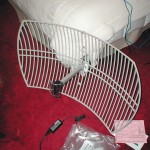
You may find yourself unable to download attachments on an e-mail message you received on your Android or Apple iPhone from your Microsoft Exchange Server. In my case, this presented a “Unable to download.” with a retry option. Retrying would not work.
If the attachment is larger (over 10MB), this is most likely due to a limit enforced on the Activesync site in IIS on your Exchange Server. In this post I’m going to tell you why this happens, and how to fix it!
The Problem
Microsoft Exchange uses IIS (Internet Information Server) for numerous services including ActiveSync. ActiveSync provides the connectivity to your mobile device for your Exchange access.
IIS has numerous limits configured to stop massive bogus requests, reduce DDOS attacks, and other reasons.
The Fix
To resolve this and allow the attachment to download, we need to modify two configuration values inside of the web.config file on IIS.
Below are the values we will be modifying:
- MaxDocumentDataSize – Maximum file (message) data size for transfer. “Sets the maximum data size that we will fetch (range or othewise)”
- maxRequestLength – “Specifies the limit for the input stream buffering threshold, in KB. This limit can be used to prevent denial of service attacks that are caused, for example, by users posting large files to the server. The default is 4096 KB.” (as per here)
These settings are configured in the following file:
C:\Program Files\Microsoft\Exchange Server\V15\ClientAccess\Sync\web.config
Before modifying the variables, please make a copy or backup of the web.config file so you can restore.
After you make a backup, open the file in notepad (right click -> run as administrator), and open the web.config file.
Simply search for the two values listed above, and change them. In my case, I tripled the “MaxDocumentDataSize”, and the “maxRequestLength” values. Examples from my “web.config” file are below:
add key="MaxDocumentDataSize" value="30720000"
httpRuntime maxRequestLength="30720" fcnMode="Disabled"
After changing these, run the following command from an elevated (as administrator) command prompt to restart IIS:
iisreset
And bam, you’re good to go!















